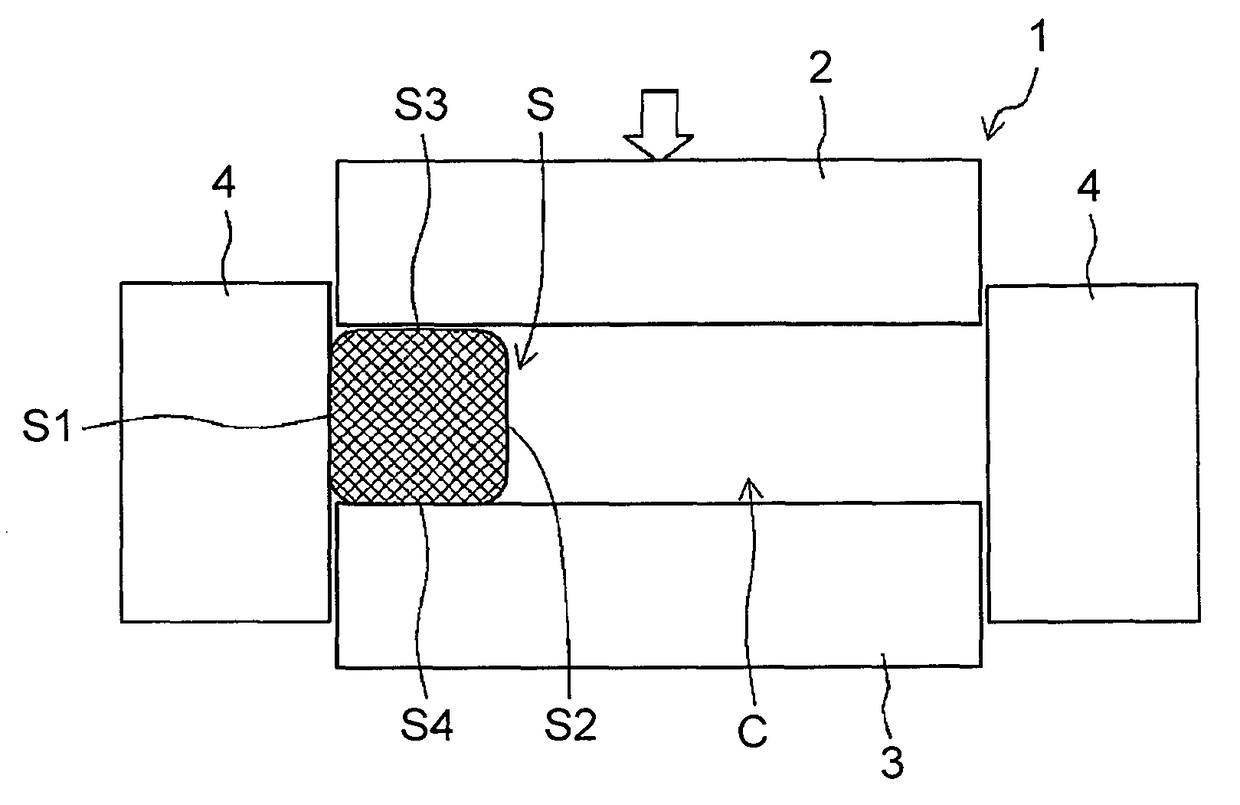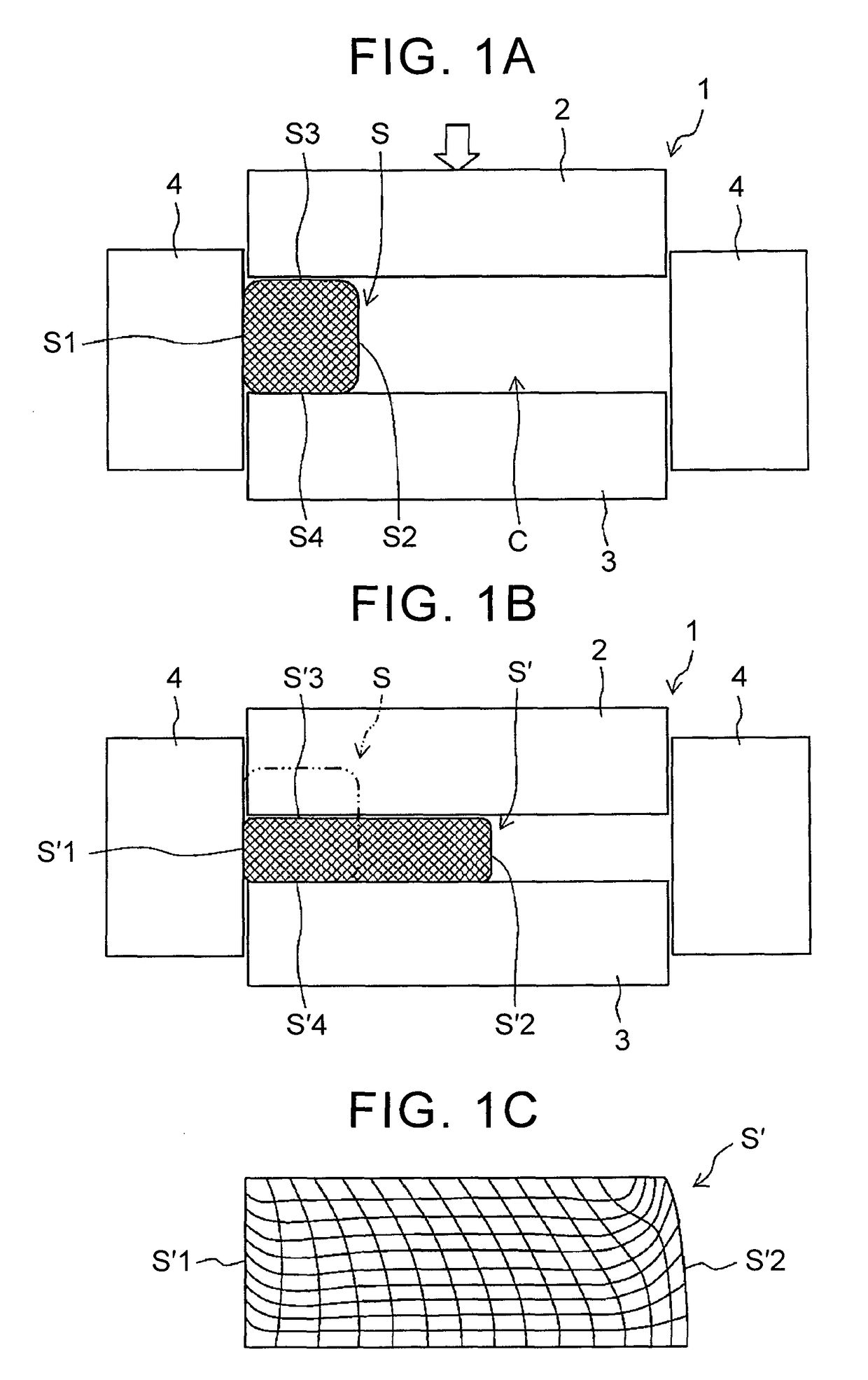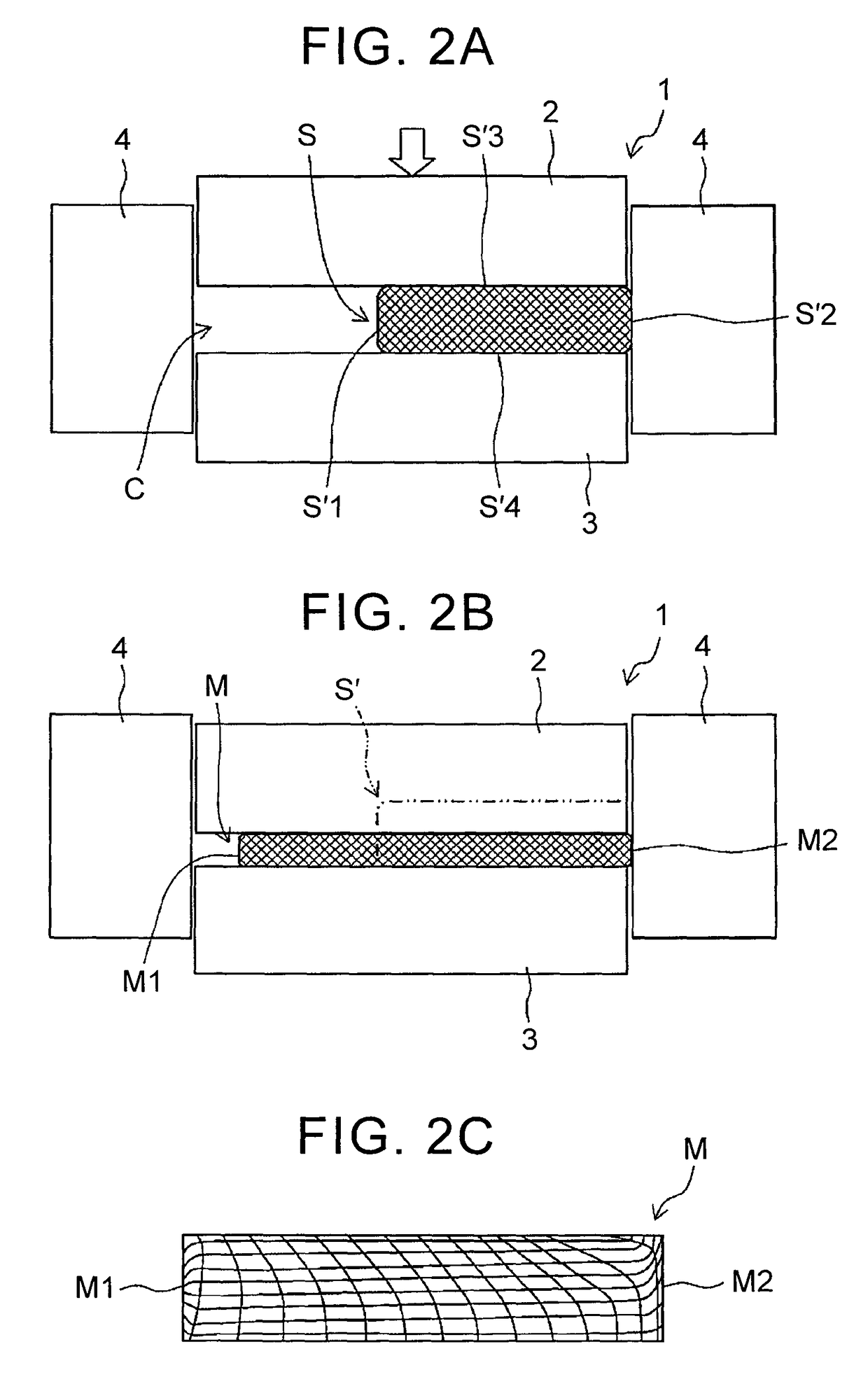Method of production rare-earth magnet
a rare earth magnet and production method technology, applied in the direction of magnetic materials, inductance/transformer/magnet manufacturing, magnetic bodies, etc., can solve the problems of plastic deformation, significant non-uniform strain distribution in the sectional direction of the magnet, and non-uniform strain distribution of the magnet, etc., to suppress deformation, uniform strain distribution, and suppress deformation
- Summary
- Abstract
- Description
- Claims
- Application Information
AI Technical Summary
Benefits of technology
Problems solved by technology
Method used
Image
Examples
first embodiment
of Method of Producing Rare-Earth Magnet
[0057]In a method of producing a rare-earth magnet according to this embodiment, a sintered body, which is solidified by sintering a rare-earth magnet material such as a magnet powder produced by, for example, a liquid quenching method, is subjected to hot working to obtain a desired shape, and to give magnetic anisotropy to the sintered body.
[0058]In this embodiment, for example, the sintered body which is subjected to the hot working is produced as follows. First, an alloy ingot is high-frequency melted in a furnace (not shown) under an Ar gas atmosphere decompressed to, for example, 50 kPa or lower according to a melt spinning method using a single roll, and a molten metal having a composition for producing a rare-earth magnet is sprayed onto a copper roll to prepare a quenched thin band (a quenched ribbon), and this quenched ribbon is coarsely crushed.
[0059]Next, the quenched ribbon that is coarsely crushed is filled in a cavity defined by...
second embodiment
of Method of Producing Rare-Earth Magnet
[0082]Hereinafter, a method of producing the rare-earth magnet according to a second embodiment of the invention will be described with reference to the attached drawings. The method of producing the rare-earth magnet according to this embodiment is different from the first embodiment in that side surfaces of the sintered body and the rare-earth magnet precursor, which are to be brought to the constrained state, are not caused to come into contact with the inner surface of the die and are brought to the unconstrained state at an initial stage of the pressing, and are caused to come into contact with the inner surface of the die and are brought to the constrained state in the course of the pressing. The other configurations are the same as the first embodiment, and the same reference numerals are given to the same configurations and a description thereof will not be repeated.
[0083]FIGS. 3A to 3C are process diagrams of a first step of this embo...
PUM
| Property | Measurement | Unit |
|---|---|---|
| temperature | aaaaa | aaaaa |
| temperature | aaaaa | aaaaa |
| temperature | aaaaa | aaaaa |
Abstract
Description
Claims
Application Information
 Login to View More
Login to View More - R&D
- Intellectual Property
- Life Sciences
- Materials
- Tech Scout
- Unparalleled Data Quality
- Higher Quality Content
- 60% Fewer Hallucinations
Browse by: Latest US Patents, China's latest patents, Technical Efficacy Thesaurus, Application Domain, Technology Topic, Popular Technical Reports.
© 2025 PatSnap. All rights reserved.Legal|Privacy policy|Modern Slavery Act Transparency Statement|Sitemap|About US| Contact US: help@patsnap.com



